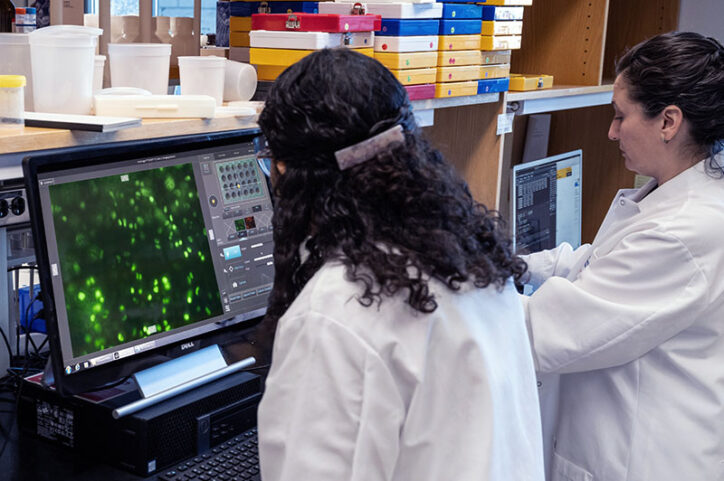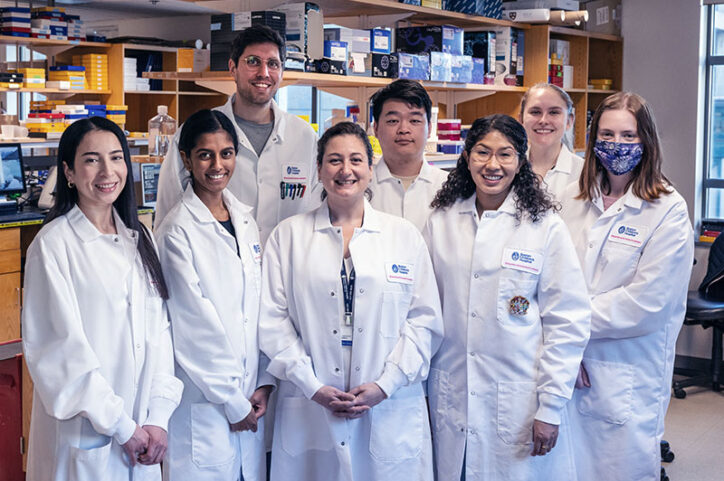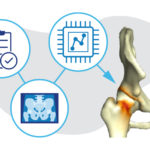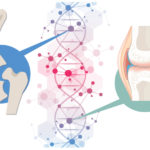Engineered cartilage could turn the tide for patients with osteoarthritis

About one in seven adults live with degenerative joint disease, also known as osteoarthritis (OA). In recent years, as anterior cruciate ligament (ACL) injury and other joint injuries have become more common among adolescent athletes, a growing number of 20- and 30-somethings have joined the ranks of aging baby boomers living with chronic OA pain.
Key takeaways
- Treatments for degenerative joint disease are limited because articular cartilage doesn’t heal efficiently after injury or as people age.
- A team at Boston Children’s is studying how pluripotent stem cells develop into cartilage tissues.
- By replicating that process, they are developing a procedure to engineer tissues that could be used to repair damaged cartilage and stop disease progression.
Treatments for degenerative joint disease are limited, largely because the cartilage that protects the joints doesn’t regenerate after birth. Without a way to stimulate regrowth of damaged cartilage, most treatments focus on managing symptoms. And with few curative treatment options, OA remains one of the leading causes of pain and disability in the United States.
Boston Children’s researcher April Craft, PhD, and her team want to change that. Their approach: “grow” cartilage in the lab that could be used to replace damaged articular tissues in patients’ joints.
Lessons in cartilage and degenerative disease
The team first set out to understand how cartilage and joint tissues develop naturally and how stem cells differentiate into cartilage cells, or chondrocytes. The next step was to replicate that process in the lab, putting cells through the same stages of development.

In a study published in BMJ, members of the Craft Lab described their approach for generating cartilage from induced pluripotent stem cells (iPSC). Derived from patients’ own cells, iPSCs can give rise to virtually any type of cell in the body, including chondrocytes. The team generated cartilage-like tissues from two patients with progressive pseudorheumatoid arthropathy of childhood (PPAC), a genetic condition that causes severe premature joint degeneration.
“We chose to study PPAC because joint degeneration in this condition progresses rapidly toward a state that is indistinguishable from end-stage OA,” says Craft. “Our iPSC model of PPAC cartilage will help us learn about this devastating disease.” Their findings may possibly apply more broadly to OA from acute injuries or chronic overuse, as well as provide the basis for future therapeutics development.
Generating treatment options for degenerative joint disease
Using cartilage engineered in the Craft Lab, the team has successfully repaired damaged joint tissues in rats and is preparing to test the procedure in large animals.
Because joint-lining cartilage is avascular and the implanted chondrocytes will be encased by the cartilage tissue itself, there is a reduced likelihood of implant rejection. Because of this, Craft believes that someday “off-the-shelf” cartilage for human patients could be created using one cell line. If so, live cartilage tissues could be produced, stored, and delivered to surgical teams as needed to replace damaged cartilage.
In some ways, the procedure resembles the most advanced cell therapy for cartilage: autologous chondrocyte implantation. In this two-procedure process, chondrocytes are harvested from one area of the body, expanded in number, and then implanted into the damaged area.

Off-the-shelf cartilage implants would allow patients to undergo just one surgical procedure rather than two. Replacing damaged cartilage with a piece of new cartilage that was generated ahead of time would omit the delay in manufacturing associated with autologous cartilage harvesting, reduce the rehabilitation time, and allow patients to return to their normal activities sooner after surgery.
The first humans to receive this novel implant would likely be patients who have pain and joint damage but haven’t yet progressed to severe degeneration. And eventually, it could be tried in others, such as athletes with joint damage.
“This could have a profound impact on people as they age as well as athletes experiencing joint pain,” says Craft.
Learn more about the Craft Lab and the Orthopedic Department.
Related Posts :
-

Uncertainty surrounds ACL treatment decisions in young athletes. It shouldn’t.
It’s an injury once seen mainly in adults, yet it’s become increasingly common in younger patients. From 2000 to 2020, ...
-

AI could change the way we look at hip preservation
Orthopedic surgeons and biomedical engineers are trained to approach adolescent and young adult hip pain from two different perspectives. Surgeons ...
-

The surprisingly specific genetics of joint disease
A new study provides unexpected insights into the biology of two common, heritable orthopedic conditions: developmental dysplasia of the hip (...
-

From medical first to marathon finisher: Corey's ACL story
Corey Peak’s role as a “medical first” began on a ski slope in 2015 when he tore his anterior collateral ...





